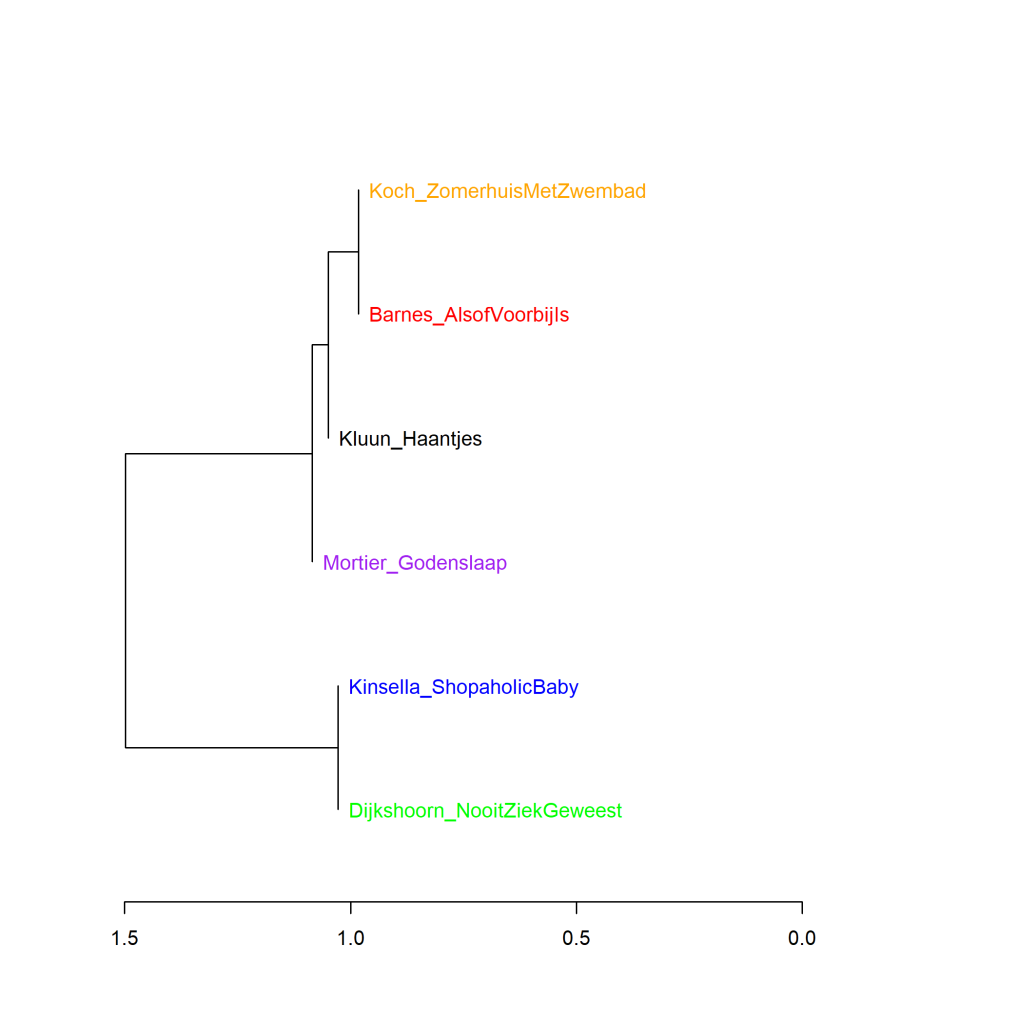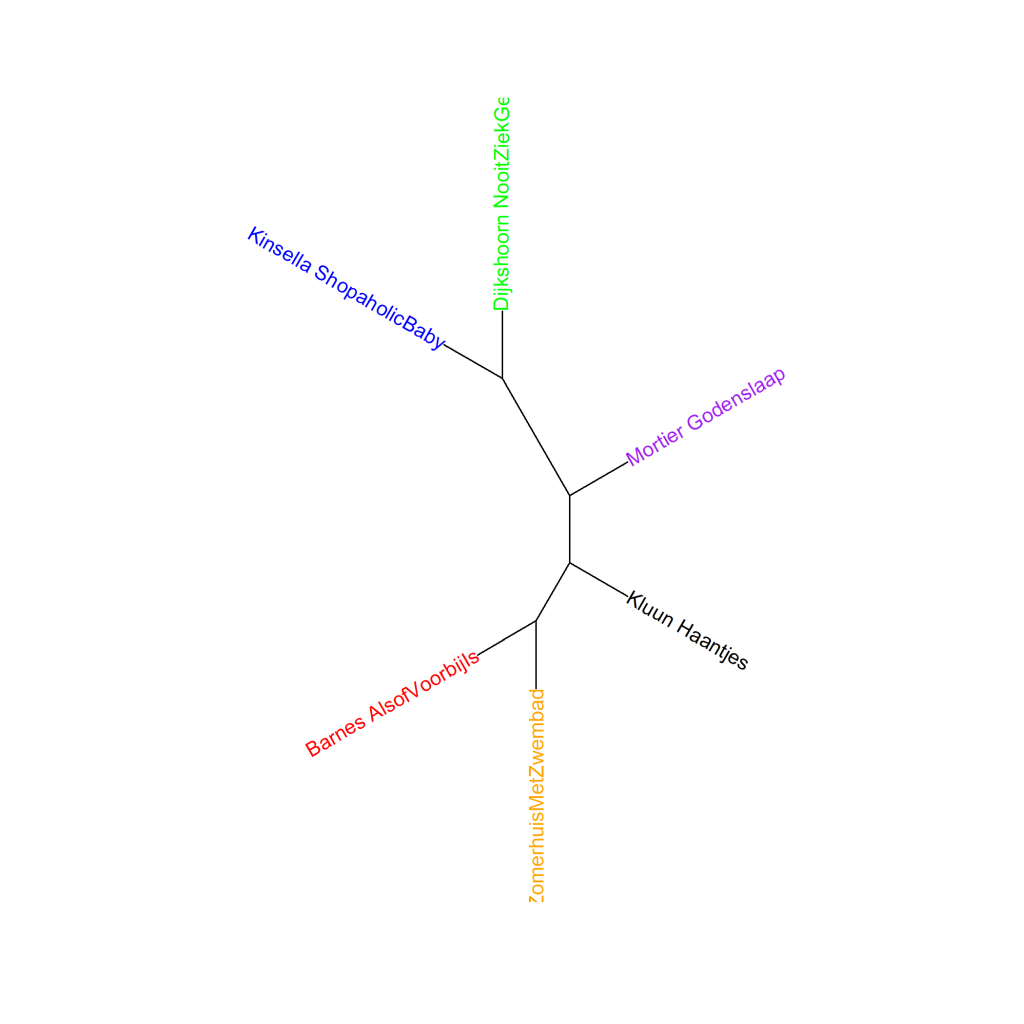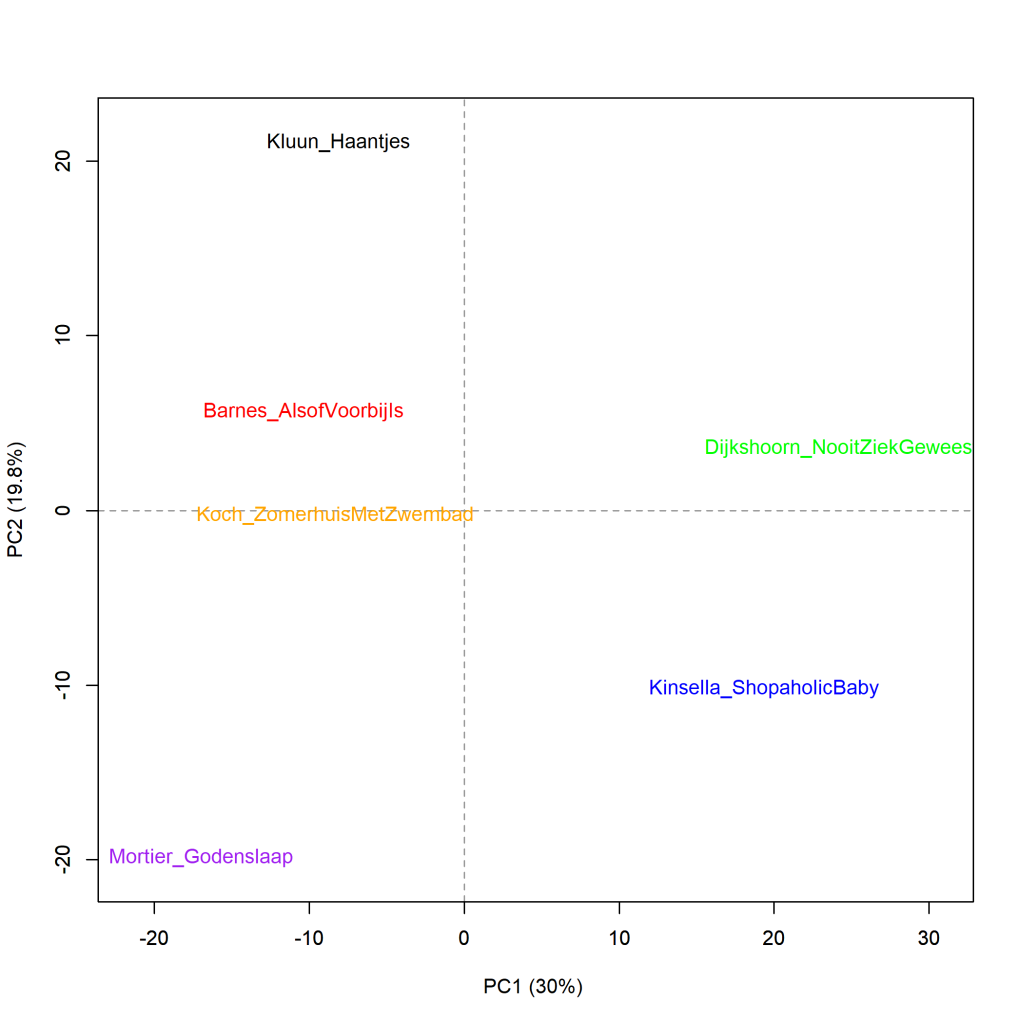Colour version of the graph on p. 147 of The Riddle of Literary Quality.
Kluun, Haantjes, versus Koch, Zomerhuis met zwembad, added with Barnes, Alsof het voorbij is, Kinsella, Shopaholic en baby, Dijkshoorn, Nooit ziek geweest and Mortier, Godenslaap, cluster analysis (1000 most frequent words). Measure: Classic Delta.

These graphs have also been created using the Stylo Package for R. See Figure 3.1 for more information about the package and the measures.
The cluster analysis visualised in FIgure 5.8 is again based on the 1000 most frequent words. Here, the novels by Kluun and Koch are both seen in a cluster with Barnes and Mortier, while the least literary books by Kinsella and Dijkshoorn make up the other main cluster. In a series of cluster analyses, visualised in Figure 5.8.1, we see no changes in the picture. An analysis on main components of these six novels does not give any new insights but confirms the picture, see Figure 5.8.2.
Figure 5.8.1: Kluun, Haantjes, versus Koch, Zomerhuis met zwembad, added with Barnes, Alsof het voorbij is, Kinsella, Shopaholic en baby, Dijkshoorn, Nooit ziek geweest and Mortier, Godenslaap.
Bootstrap consensus tree (100 - 1000 most frequent words, increment 100, consensus strength 0.5). Measure: Classic Delta.

Figure 5.8.2: Kluun, Haantjes, versus Koch, Zomerhuis met zwembad, added with Barnes, Alsof het voorbij is, Kinsella, Shopaholic en baby, Dijkshoorn, Nooit ziek geweest and Mortier, Godenslaap.
Principal components analysis (1000 most frequent words). Measure: PCA, correlation version.

Conclusion
The duelling novels of Kluun and Koch are both more in line with the most literary novels in the corpus than the books rated low on literary quality if we look at word frequencies. So they are more similar to each other than all discussions of their duels suggest. But that still provides little information about what makes one book more literary rated than the other. For that, then, we need to look beyond word frequencies alone. More on this in Chapter 6 of The Riddle of Literary Quality.